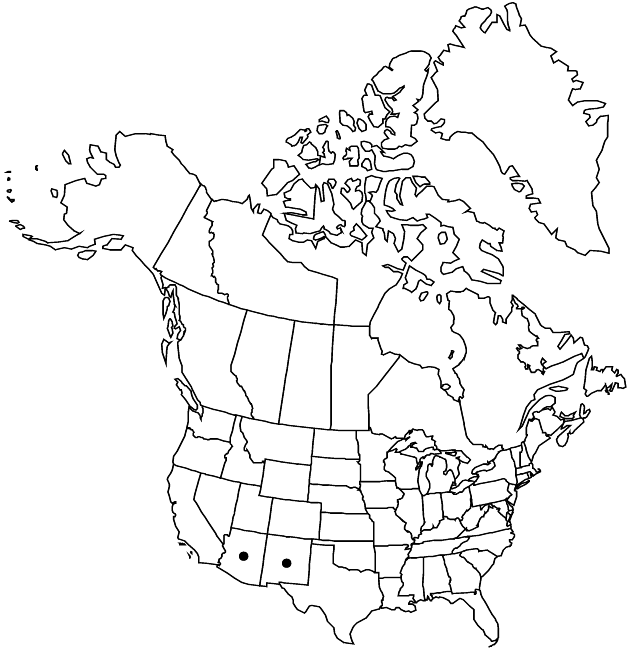Difference between revisions of "Brickellia betonicifolia"
Smithsonian Contr. Knowl. 5(6): 72. 1853.
FNA>Volume Importer |
FNA>Volume Importer |
||
| Line 45: | Line 45: | ||
|publication year=1853 | |publication year=1853 | ||
|special status= | |special status= | ||
| − | |source xml=https://jpend@bitbucket.org/aafc-mbb/fna-data-curation.git/src/ | + | |source xml=https://jpend@bitbucket.org/aafc-mbb/fna-data-curation.git/src/f50eec43f223ca0e34566be0b046453a0960e173/coarse_grained_fna_xml/V19-20-21/V21_1244.xml |
|tribe=Asteraceae tribe Eupatorieae | |tribe=Asteraceae tribe Eupatorieae | ||
|genus=Brickellia | |genus=Brickellia | ||
Revision as of 20:34, 16 December 2019
Perennials, 30–90 cm. Stems branched from bases, pubescent. Leaves opposite; petioles 1–5 mm; blades 3-nerved from bases, oblong, obovate, or ovate, (15–)30–80 × 10–35 mm, bases cordate or truncate, margins crenate-serrate, apices acute to obtuse, faces sparsely pubescent and gland-dotted. Heads erect, usually in loose, paniculiform arrays, sometimes borne singly. Peduncles 2–15 mm, hispid to hirsute. Involucres cylindric to narrowly campanulate, 8–12 mm. Phyllaries 17–20 in 3–5 series, pale green, often purplish, 5–9-striate, unequal, margins narrowly scarious-ciliate (apices acute to acuminate); outer lance-ovate (sparsely pubescent), inner narrowly lanceolate (glabrous). Florets 10–16; corollas purplish, 7–9 mm. Cypselae 3–4 mm, densely pubescent to velutinous; pappi of 40–52 white, barbellate bristles. 2n = 18.
Phenology: Flowering Jul–Oct.
Habitat: Oak woodlands, open limestone hillsides
Elevation: 1500–2000 m
Distribution

Ariz., N.Mex., Mexico.
Discussion
Selected References
None.